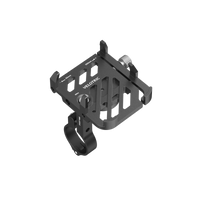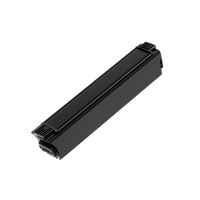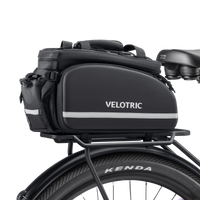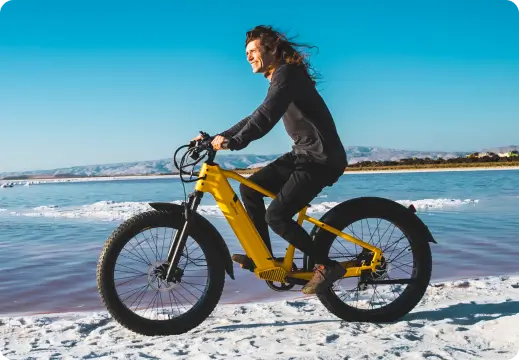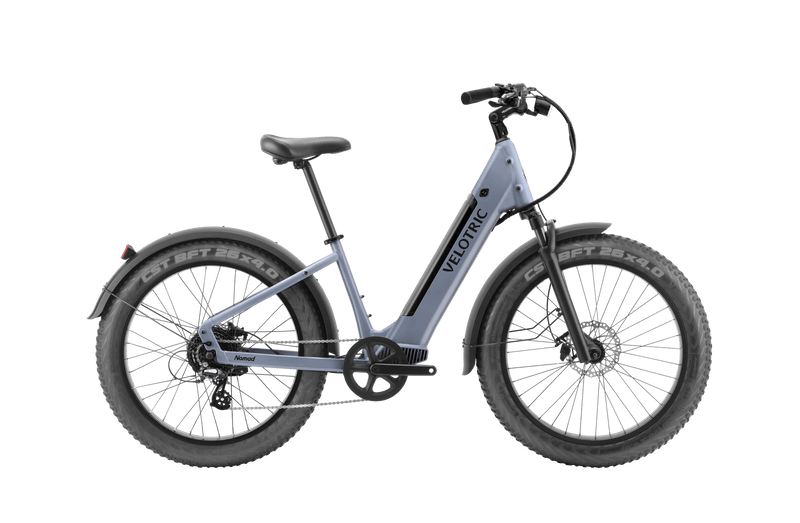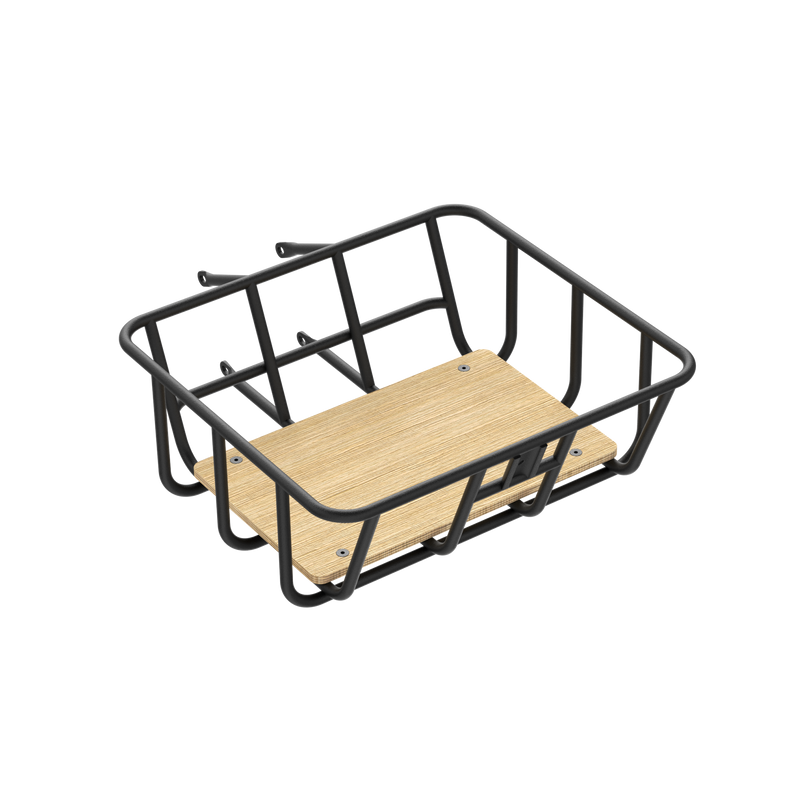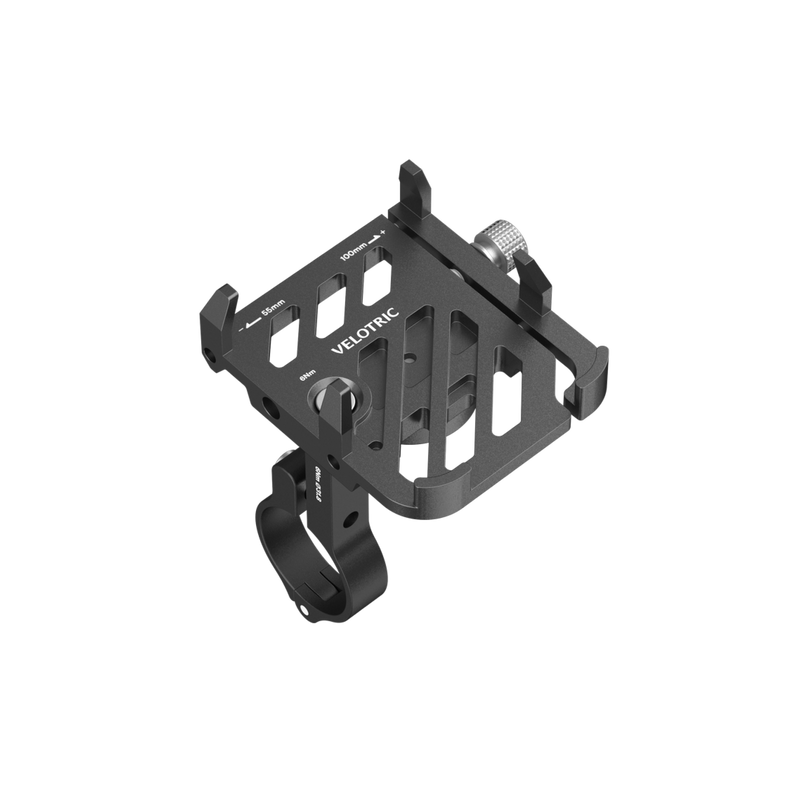An electric bicycle is convenient for exercising, exploring the great outdoors, or getting from point A to point B. Thanks to its electric motor, an e-bike can help you go farther and faster without getting tired as quickly.
Before you start cycling, there are a few must-do tasks — like finding the right bike frame and fitting your bike for your body. The most important task of all? Making sure your e-bike is safe to ride.
This e-bike safety checklist covers the must-do steps to protect you and your bike.
Are electric bikes safe?
Since an e-bike has an electric motor, it can go at higher speeds than a regular bike. You might worry this poses an increased safety risk. An e-bike is a safe way to get around, provided you take the proper precautions.
For example, you want to follow local e-bike laws, like helmet regulations and rules regarding where you can ride. These laws are designed to protect you and others on the road, including pedestrians and other cyclists.
Note that e-bike laws vary between states. For example, the rules in Florida are different from those in New York — and New York City has laws distinct from New York state. Always look up your area’s rules before riding.
Other than obeying the rules of the road, you can take some basic precautions before, during, and after your e-bike ride. We cover the basics below.
Pre-ride safety check
A safe e-bike ride starts before you even get on the bike. Follow these pre-ride tips to ride with confidence:
- Check the brakes. Your e-bike’s brakes ensure you can make fast, clean stops and avoid obstructions. Before your ride, make sure your brake pads are in good condition. They should have no missing indents or pieces, and at least 1.5 millimeters (mm) of brake pad material should remain. For reference, a grain of rice is about 1.5 mm. We explain how to check Velotric brake pads (different bikes may have different processes for accessing the brakes).
- Check the tires. First, make sure you have the right bike wheels for your purpose. The tires you’d use for mountain biking are different from those for road racing, for example. Then, check the tires, ensuring there are no signs of punctures and that the treads aren’t worn. Finally, check the tire pressure. The tire should have the recommended pressure printed on the side.
- Check the chain. Bike chains can accumulate dirt, dust, pollen, and other debris over time. They may become brittle and break if they aren’t cleaned, leaving your bike unusable. Check your bike chain for breakage before riding (we talk about how to clean and lubricate it below).
- Check the lights and reflectors. Bike lights and reflectors help ensure visibility on the road. With lights, you can see where you’re going. Meanwhile, reflectors help others see you. Double-check that all lights and reflectors are properly secured to the bike and working, especially if you’ll be riding at dusk or nighttime.
- Check the battery charge level. The last thing you want is to get halfway through your e-bike ride only to discover the battery is drained. Make sure your battery has enough juice before you pedal away. Every bike’s charging needs are unique. For example, Velotric’s e-bikes have a lithium-ion battery that charges completely in just six hours.
On-road safety tips
With your pre-ride checklist complete, you’re ready to go! Follow these safety tips while you’re cycling:
- Wear a helmet and other safety gear. Some states require e-bike riders to wear helmets, depending on their age and the class of e-bike they’re using. Even if your state doesn’t mandate helmets, we recommend wearing them! Research has shown that wearing a helmet can save lives. Other safety gear we recommend include a reflective vest to enhance visibility, cycling gloves to improve your grip on the handlebars, eyewear to protect your vision, and appropriate clothing that isn’t too loose or flowing.
- Stay visible on the road. A reflective vest makes it easier for others to see you on the road. You can also affix reflective tape to your bike helmet and pedals to make it easier for people to see you. If you’re cycling on roadways, be aware of drivers’ blind spots. If you can’t see their eyes in their rearview or sideview mirrors, they can’t see you.
- Observe traffic laws and regulations. Acquaint yourself with your area’s e-bike and traffic laws before riding. For example, you can ride an e-bike on the right shoulder of the roadway in Texas. However, you can’t make a left turn from this position. Also, follow the rules regarding where you can ride. If you’re not allowed to ride on the sidewalk, don’t! This keeps pedestrians — and you — safe.
- Know your bike class. E-bike laws often depend on the e-bike class. It’s important to know what class of e-bike you’re riding (Class 1, Class 2, Class 3) so you know what laws apply to you. E-bike classes are usually based on the bike’s motor power and whether the bike offers pedal assist and/or throttle assist. For example, you might be able to ride a Class 1 e-bike on traditional bike trails but not a more powerful Class 3 e-bike.
- Use hand signals to communicate with other road users. Hand signals let other cyclists and motorists know where you’re headed and can help prevent collisions. To turn left, stick your left arm straight out to the side. To turn right, stick your right arm straight out to the side. If you can’t stick out your right arm, for example, because of roadside obstructions like signs and mailboxes, you can stick out your left arm with the elbow bent, and your hand pointed upward (with your hand flat).
- Avoid distractions while riding. Distracted cycling is just as risky as distracted driving. Your attention should be on the road when you’re on your bike. Avoid texting, listening to music, or talking on your phone while cycling. Even if you’re using a hands-free device, your attention could be distracted from what’s going on around you.
Charging and battery safety
Your bike’s electric motor is powered by the e-bike battery, making it one of the most important e-bike components. Here’s how to ensure your battery is well-maintained and safe to use:
- Use the charger that comes with your electric bike. There are different types of e-bike batteries, including lead-acid, lithium-ion, and lithium-iron-phosphate. On top of that, e-bike batteries have varied capacities (watt hours), voltages, and amp hours (Ah). If you use the wrong type of e-bike battery, the bike may not charge, and it could lead to a battery fire.
- Keep the battery away from extreme temperatures and moisture. Properly caring for your e-bike battery can safeguard its life span, so you don’t have to buy a new battery sooner than necessary. Protecting the battery from extreme conditions is one way to keep it safe. It shouldn’t be kept in extremely high or low temperatures or be exposed to moisture. When your bike isn’t used, remove the battery and bring it inside to store it in a cool, dry place. It should be kept at room temperature, from about 50 to 77 degrees Fahrenheit.
- Check the battery for signs of wear and tear. Check your battery regularly for signs of damage, like corrosion or dents. Don’t ride with a damaged battery, which may run out of power faster than expected and be a safety risk. We recommend checking your battery every three to four months if you’re a bicyclist who rides at least 1,000 miles per week.
- Replace the battery if necessary. If your battery is damaged, replace it. Batteries may also need replacing if they’re no longer charging properly. To help preserve your battery’s life span, keep it charged between 30% and 70% capacity. If you completely charge up and drain it constantly, you’ll put extra stress on the battery cells and run down the battery more quickly.
Maintenance and inspection
A well-kept e-bike is a safe bike. Our comprehensive e-bike maintenance checklist covers the most important maintenance points. Here are some highlights:
- Clean your e-bike regularly. Clean your e-bike after every ride. Otherwise, dirt can build up and jam essential components, like the gears. Before cleaning, remove the battery. Use a low-pressure hose or water from a bucket to wash your bike. Don’t use high-pressure hoses or power washers, which can harm wheel spokes and other delicate parts. Use a brush or large sponge and a bike-specific cleaning product to get through the grime. After rinsing the bike, wipe it down with a soft, clean cloth, avoiding the disc brakes.
- Inspect the brakes, tires, and chain for wear and tear. Ensure the bike’s brake pads are sufficiently padded and free of damage (we discuss this in detail above). You also want to check the tires for punctures, sufficient treading, and adequate tire pressure. Finally, check the bike chain for signs of brittleness or breakage.
- Clean and lubricate the chain. Lubricant can help protect the bike chain from becoming dried out, brittle, and broken. Before applying lubricant, clean the bike chain with a clean, lint-free cloth. Then, apply lubricant to all parts of the chain to reduce friction and minimize the likelihood of corrosion. A well-kept chain can also make for a smoother ride.
- Check for loose parts. E-bike screws and bolts may come loose over time, especially if you recently went for a bumpy ride. Check that key components like the brake levers and knobs are firmly secured. Also, check that there aren’t any loose connections in the bike’s electrical system, which can result in motor failure.
- Take your e-bike to a professional for regular maintenance. While you can do a lot of e-bike maintenance, getting a professional tuneup is still smart. We recommend going at least yearly. If you ride frequently, more regular visits are necessary. Some experts recommend getting your bike checked every 1,000 miles. So, if you ride 100 miles weekly, that’s about every three months.
E-bike safety FAQ
Still have concerns about e-bike safety? We’ve got you covered with our frequently asked questions.
What are some safety regulations for e-bikes?
Safety regulations for e-bikes depend on a few factors. First, there’s location. E-bike laws in California aren’t the same as e-bike laws in Washington. In addition to state laws, there are municipal laws.
E-bike laws can also depend on e-bike class. For example, you can ride Class 1 and Class 2 e-bikes on most bicycle paths in Washington. However, Class 3 e-bikes aren’t allowed on sidewalks or shared-use paths (paths for traditional bikes and pedestrians).
Check with your local police department, DMV, or department of transportation (DOT) for details. City, state, and national parks usually have their own rules, so check with the governing body of the park you want to ride in.
What safety gear should I wear when riding an e-bike?
What you wear can impact the safety of your e-bike ride. Here’s a quick rundown of some gear that can help keep you healthy:
- Helmet. A helmet reduces the risk of facial injuries and traumatic brain injuries in case you’re in a collision.
- Eye protection. Eye protection keeps debris out of your eyes, so your vision isn’t obstructed. When riding on sunny days, sun protection is also a must.
- Protective clothing. Wearing seasonally appropriate clothing helps keep you comfortable and prevents distractions while riding. Prioritize form-fitting clothing; loose, billowy clothes can get caught in bike gears.
- Reflective gear. A reflective vest makes it easier for people to see you when cycling. You can also get reflective tape to apply to your helmet.
What are some common e-bike safety hazards?
Sure, it’s not fun to think about what might go wrong when riding your e-bike. However, familiarizing yourself with safety hazards can help you avoid them while cycling. Be aware of these potential threats:
- Risk of collision. A collision with another cyclist, pedestrian, or motor vehicle is a scary experience for any e-bike rider. To minimize the risk, follow the rules of the road, like coming to a full stop at an intersection with a stop sign. Also, use hand signals and make sure you’re visible to others, for example, by wearing reflective clothing and avoiding drivers’ blind spots. Finally, avoid distracted cycling and always be aware of your surroundings.
- Danger of losing control or balance. Losing control of your e-bike or getting off-balance can lead to a collision with a moving or stationary object. Don’t ride faster than you’re comfortable to avoid losing control, especially when using features like pedal or throttle assist. Picking a suitable bike frame and ensuring it’s properly fitted to your body — for example, by adjusting the seat and handlebars — can help avoid balance issues.
- Electrical safety concerns. The electric bike’s battery and motor can be a safety hazard if you don’t properly maintain them. Unfortunately, there have been reports of e-bike batteries catching fire. If you follow the safety precautions described above — like only using the battery designed for your e-bike and protecting the battery against dampness — you can reduce this risk.
- E-bike malfunction. Beyond the electric components, e-bikes can malfunction in other ways. For example, the chain can break, or the brake pads may become worn. The best way to avoid technical issues is to regularly clean and maintain your e-bike and take it to a professional for a tuneup at least yearly.
Explore e-bike options with top safety ratings from Velotric
Riding e-bikes is a fun and safe way to get around. However, follow e-bike safety best practices to protect yourself and those around you on the road. The above guide covers the basics, from pre-ride prep to staying safe while riding.
The very first step in bicycle safety? A high-quality, well-manufactured e-bike. The Velotric Discover 1 and Nomad 1 e-bikes have you covered. Our bikes come with batteries recognized by the global safety standards organization Underwriters Laboratories (UL2271), while our bike frames are tested more than 150,000 times.
Finally, all our bikes come with an industry-leading one-year warranty so that you can ride with confidence.
























